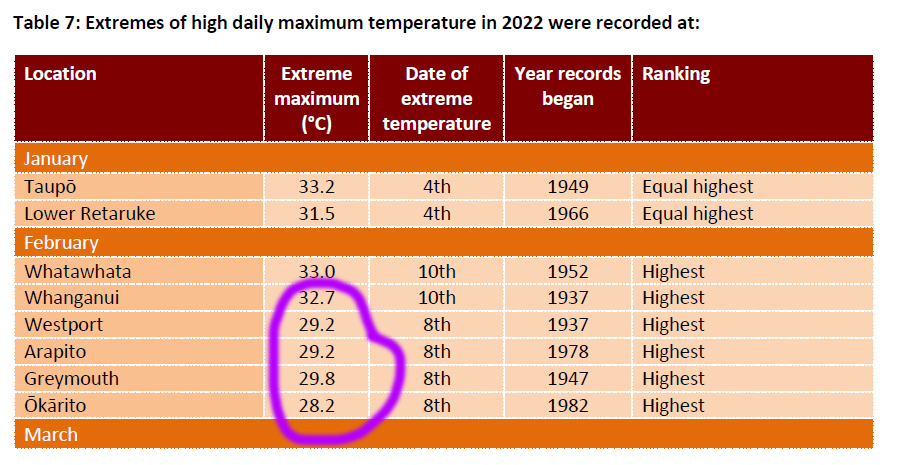THE LIFESTYLE BLOCK BOOM INVESTIGATE: JUN 03
Is it the call of the wild, or something even more primal? HAMISH CARNACHAN investigates a growing phenomenon in population drift:
They call it downshifting. A word evocative, per-haps, of a steel blue Porsche 911 whipping through the mountain passes of the Southern Alps, just open space as far as the eye can see across the Canterbury plains below out to the ocean beyond, and on the roadside drifts of snow that the distant winter sun has tried but failed to claw from the alpine landscape. Downshifting, a word that spins you up in its vortex and virtually screams “escape”, “freedom”, “lifestyle”.
If it wasn’t dreamt up by some marketing spinwizard, it should have been. Because these days they’re talking about “downshifting” in relation to lifestyle choices – kicking the big smoke bye-bye, and staking out that ten-acre block in the country you’d fantasised about owning ever since those lazy summers of your childhood.
Fed up with all that city-living entails, an alternative existence is rapidly luring an ever-increasing swathe of intransigent townies away from suburbia. Throughout the country, former city slickers are finding their field of dreams lies not amidst the corporate high rises but out in the paddocks, beyond the confines of the cityscape. They’re ditching the constraints, the hustle and bustle, of metropolitan life for the privileges country solitude can offer, and they’re finding it often at a cost considerably less than in most parts of suburbia.
These people are heading for the prospects of a better life for their families, fresh air, open spaces, bigger properties that tend to hold the pledge of swimming pools, tennis courts, and large gardens with plenty of land leftover for free-range children, and grazing horses or a small flock of sheep.
And yet, the delights of grassroots New Zealand culture are often only a stone’s throw away from the city centres. Venture out of the suburbs of any major city and you’ll come across delightful locales like Amberley on the outskirts of Christchurch, Brighton to the south of Dunedin, and Clevedon just out of Auckland.
Situated on the city fringe where suburbia melts into the rolling rural landscape, these are places where the locals live a hybridised existence influenced by their environs – close enough to commute to the city for work, far enough removed to enjoy the solitude of country life. This is the region of the “weekend farmer”.
The houses, generally a mix of neatly renovated colonial homesteads and sophisticated new developments, are mostly large, with gardens immaculate. Mud splattered BMWs and Mercedes fight for parking space in the garage with late model utes and farm bikes. Timberland shoes and Red-band gumboots stand side-by-side lining the front-door foyer. Here is eclectic yet idyllic lifestyle as peaceful as any.
With more high-density housing encroaching on personal space, escalating property prices, and ever-increasing traffic congestion, pollution, crime and violence, more and more people are leaving the city in search of the ‘good life’, and who can blame them? But while rural life is the stuff many people’s dreams are made of, is the grass necessarily greener on the other side, and what of this phenomenon of lifestyle block sprawl?
For Terry and Beatrice Nuthall, leaving the city behind was everything they had dreamed of. They found their slice of paradise on a 10 acre block in the Kumeu region, another lifestyle stronghold, northwest of Auckland. With their three children having flown the nest, Terry and Bea purchased ‘Falconhurst’, an idyllic property bordered by mature macrocarpa trees and nestled amongst orchards, vineyards and a myriad of other agricultural endeavours.
The property is only a half hour drive from central Auckland – five minutes from Kumeu town centre – but it seems a world away from the city. The secluded solitude of Falconhurst is a lifestyle block at its quintessential best. A stream meanders through the middle of the section, past a generous homestead with flowing gardens and immaculately groomed lawns, protected from a small holding of stock by split-post fencing stained to match the architraves of the house.
But while the couple don’t typify the young families of ‘2.7 children and a dog’ that are heading for the hills, their motives for moving were the same – a more leisurely lifestyle. Terry says that aspect of the purchase was the greatest success and he is enthusiastic about encouraging others to pursue their dream if this is where it lies. “Get out of the dirty, cramped, car-polluted city I say.”
He still marvels at some of the charms of country life that simply cannot be equalled in the city too.
“They’re simple things like when you go out you don’t have to worry about locking everything up. You make lasting friendships out of the close networking that goes on in the rural community. We even used to trade openly because people around you are all doing different and interesting things on their land. And one thing you really notice is how the locals seem to pull together to help each other out – how often does that happen in the city? I remember once I got the tractor stuck. I left it overnight and the next morning it was sitting there in the driveway.”
The Nuthalls bought their property in 1997 for $800,000, which is at the higher end of the market. Still, they admit making a profit when they were forced to sell earlier this year for health reasons. Subsequently, they have retrenched to the city and though they both dearly miss what they left behind, Terry has words of advice for newcomers to lifestyle block living.
“People need to move to a lifestyle block well before they retire because there’s a lot of work involved – much more than they think. Also, the cashflow is a surprising drain. We spent around $20,000 a year on maintaining the property and machinery. You can run out of water and have to buy it in, there’s fencing material and metal for the drive, it’s never ending really,” he says.
“Still, for us the positives always far outweighed the negatives.”
Today there are a host of resources to help landowners come to terms with the requirements of their new investment. Lifestyle block farmers even have their own association – The New Zealand Association of Smallfarmers – formed nearly 30 years ago. It has 15 branches throughout the country and claims to represent the interests of more than 60 000 smallholders. If that network can’t provide enough information and advice then there are magazines on the subject and a multitude of websites on the Internet.
One of the most popular websites is www.lifestyleblock.co.nz, set up and operated by Kay Swann, a farmer from Brighton just south of Dunedin. In fact, Kay’s site is the second most popular agricultural website in New Zealand. She puts the interest down to the activity of the site’s discussion group where tips and hints are fired back and forth over cyber-space. The insatiable appetite for information on the subject gives some indication of how popular lifestyle farming has become.
Kay emigrated to New Zealand from England 12 years ago and lived in the Waikato until purchasing her 14 acre lifestyle block and moving south last year. She now runs a small herd of cattle on her land, breeding them for the gourmet veal market “more as a hobby” than anything else.
“You never going to make a lot of money,” she says. “I think most people get a lifestyle block because they want more room for their families, their kids, their dogs, maybe a couple of ponies.
“There seems to have been a change in people’s values. They’re seeing that there’s more to life beyond the city. Also, with the advances in the Internet and technology these days, people are a bit more flexible – they don’t have to be living right on the office doorstep.”
Like Kay, many of her close neighbours are from Europe and the United States. “They’ve come out here following a dream”, she says, one that is too costly back in their native countries.
And they, like many Kiwi dreamers, are often unaware of the issues that affect lifestyle block owners here. She says that water supply is becoming a problem in some areas because the increasing development of farmland into smaller lots is draining bore water levels.
“The lifestyle people don’t have the network of support that the farmers do. People find it hard to get hay and when we have a drought, like we have had down here, we can’t organise to get feed from the North Island like they do.
“Conventional farmers often get tired of constantly being asked for help and advice. They also tend to think that people living on lifestyle blocks don’t look after their animals and cause a lot of animal welfare issues. I think that’s mainly through ignorance but the two don’t tend to blend. That’s why you find the lifestyle blocks grouped together in the same areas.”
Kay also suspects the dream often overshadows the practicality of small farm ownership.
“Most people go into it not really understanding what’s required. People have a rosy picture of the country and they’re not really aware of the negative side of it. You have farmers’ dogs barking at all hours, the smell of silage, low flying crop-dusters – it’s not always as peaceful as they imagine.
“There are statistics that show the average length of time people stay on a lifestyle block is five years. The main reason they leave is because they weren’t aware of how much work and responsibility is involved, or one partner gets fed up with it and tells the other, ‘This is you dream – not mine’.”
However, many still seem willingly to give it a shot. The latest statistics from the Real Estate Institute of New Zealand (REINZ) show the lifestyle block sector is one of the star performers in the property market with both values and sales volumes consistently experiencing strong and healthy growth.
Three years ago 503 lifestyle properties were sold nationwide for a median price of $185,000. The five regions with the highest prices were all in the top half of the North Island. Bay of Plenty properties were the most expensive, followed by Auckland, Northland, Waikato and Gisborne.
In March this year, 716 blocks sold for an average price of just under $250,000, but the figures show the market has moved. Auckland is on top, followed by Marlborough, Otago, Waikato and Wellington. If you had a purchased a section in the Auckland region in March 2000, at the average price of $252,000, and sold it in March this year you would have made yourself close to a cool $100,000 profit. And today you’ll be forced to fork out $314,000 on average for a section on which to set up a boutique vineyard in Marlborough.
The rural spokesperson for the Real Estate Institute of New Zealand, Murray Cleland, says the level of sales is currently limited only “by a distinct shortage of listings”.
In areas such as West Melton, Canterbury, where traditionally there have been an abundance of ‘bareland’ blocks priced from $100,000 upwards, the Bayleys property group say it is now difficult to find such a section for sale. Prices of $150,000, and over, are reportedly commonplace today. Bayelys says strong demand from migrants, particularly from the United Kingdom and Europe, is one of the drivers of this market.
While the market has shifted further south in recent years, Auckland hasn’t slipped below second place on the standings. One of the strongest performing markets in this region is the area northwest of the city. Sales Manager at Bayleys North West Auckland Margaret Curnow says she has noticed a steady increase in the demand for lifestyle properties in the region over the past four or five years.
While she says that demand is predominantly being driven by families seeking a life in the country, “more and more people who work out this way, particularly in the growing Albany business area, want to avoid hours of travel.”
Most of the lifestyle blocks being sold in this area are subdivisions of larger chunks of land and concerning for some is the fact that, as Curnow admits, “most people we work with just mow it.”
“What they want,” she says, “is country life and space without the work.”
Some farmers in the ‘right’ locations, like northwest Auckland, are finding the property market more alluring than fluctuating meat and wool prices. So, with subdivision becoming more profitable than traditional land use in some areas, what effect is this having on the productivity of the conventional farming sector?
Well, there’s not a great deal known about the phenomenon, which is part of the reason why the Ministry of Agriculture and Forestry (MAF) is about to commission an extensive study on the subject.
One MAF spokesperson says at present no one even knows exactly how many lifestyle units there are in New Zealand – it is approximated to be between 90,000 -110,000.
“We’ve done a number of broad consensus studies on commercial properties but we don’t have a handle on lifestyle blocks.”
He says the study, which is expected to be out in June next year, should help clarify the economic impact small farms are having on the economy, if any, as well as what use the land is being put into and what previous land use the blocks have been formed from.
Five years ago a similar study was conducted, but that was done on a regional, not a national, basis. MAF carried out the survey, in conjunction with the Bay of Plenty Regional Council to look at productivity and land use on lifestyle blocks in the western Bay of Plenty region.
What they discovered was that “for every pony paddock put up, a glasshouse was built too”, suggesting that there was probably no net loss of productivity.
Phil Journeaux, one of the authors of the study, says it was hard to assess the effect on overall productivity because of the many variables.
“The land had come out of sheep and beef farm property and gone into a myriad of uses. Initially our findings showed a 2–3 percent increase in productivity but when we scrutinised our methods and went back over some of the issues we discovered a 2-3 percent decrease.
“The other thing the study showed was that the smaller blocks, less than 2 hectares, tended to go into glorified gardens with a couple of cattle and few sheep. Quite clearly, those cases would contribute to a productivity drop.”
But, as MAF sources points out, often productivity is increased on small farm lots because, in the case of glasshouse horticulture for example, it is a more economic form of land use with outputs significantly greater than traditional grazing. Still, they caution about drawing national parallels from the Bay of Plenty study because some regions are better suited to a certain type of land use than others, each of which vary in efficiency.
While the jury is out until next year on whether or not the increasing demand for lifestyle blocks is affecting mainstream agriculture, there are more tangible concerns. Some farmers, whose properties border the expanding lifestyle belt, say inflated land valuations, which are being fuelled by a growing demand for rural property, are hiking up their rates.
One farmer in the Coatesville-Riverhead area northwest of Auckland is reported to have had his rates increase by more than 100 percent in a year. The owner suspects a valuation based on his property’s potential for subdivision is behind the massive rates rise. Though that was for a 40-hectare property, similar increases have reportedly whacked lifestyle block owners too. Federated Farmers fear that such an escalation in council rates charges means farmers will have less money available to invest back into productivity and income returns.
Environment Waikato Regional Council has even warned that existing farms in the district need protection from the encroachment of lifestyle blocks. Contrary to Kay Swann’s comments about the negative impacts of conventional farming on small farm owners, Councillor Neil Clarke says he has sympathy for farmers when lifestyle blocks are established close by.
“There needs to be some form of indemnity for people buying lifestyle blocks close to farms. They could sign a document noting that they understand the nature of rural living, just as coastal property owners signed waivers when they lived in coastal hazard zones.”
But Murray Cleland of the Real Estate Institute believes the increasing popularity of lifestyle blocks is having a positive effect on the rural economy. He says it has contributed to an influx of people and capitol into local businesses, both services and retail, and “adds a lot of colour to the New Zealand rural experience”.
It will be some time before we truly understand what effect the lifestyle block explosion, currently carving up tracts of prime agricultural landscape, is having on the backbone of the nation’s economy. However, now, and in the immediate future, it seems certain that the irresistible prospect of the ‘good life’ will show no sign of losing its appeal to those who can afford it. It’s just a question of whether the transition to a country life is really all that it’s made out to be.







